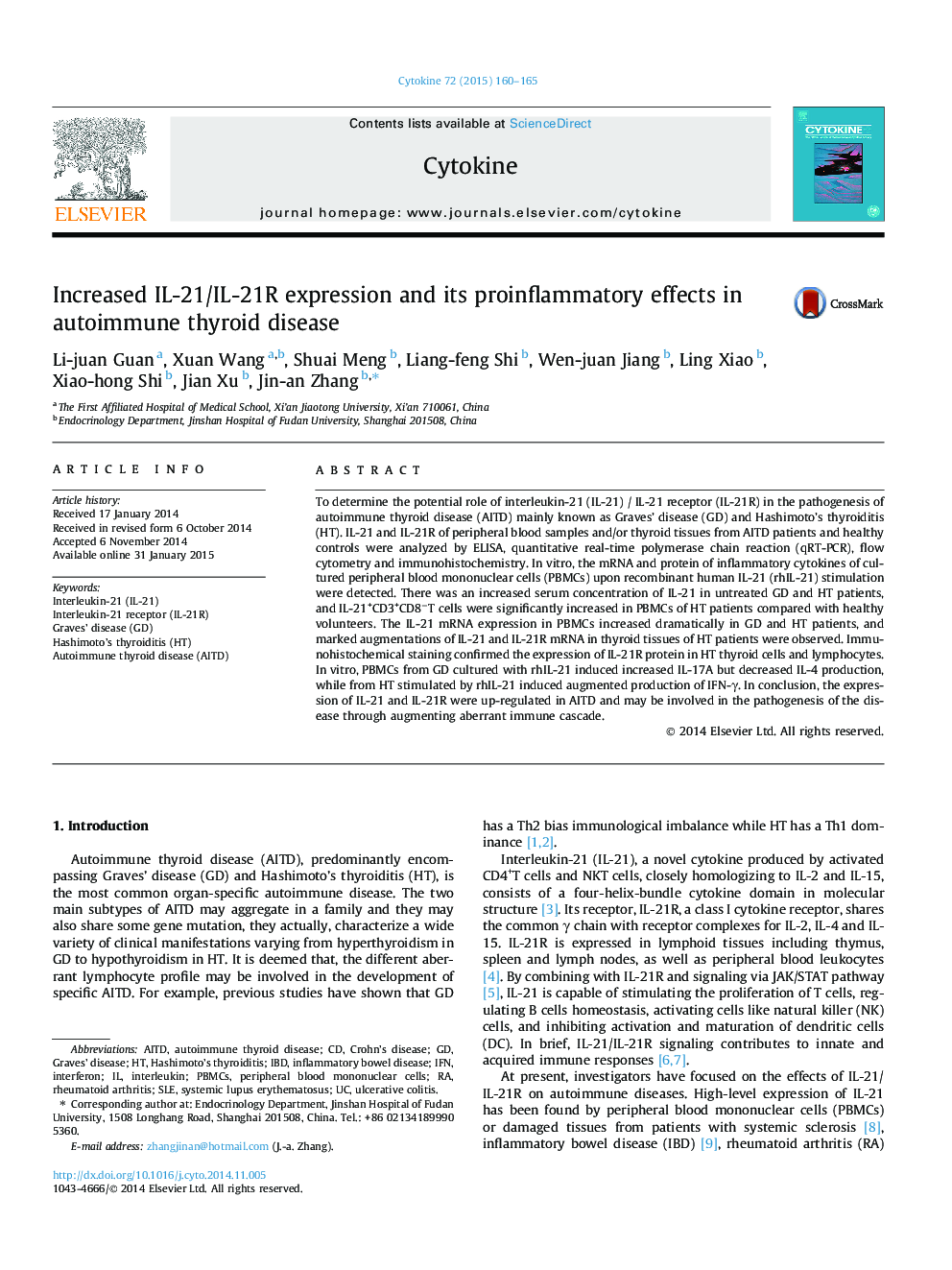| Article ID | Journal | Published Year | Pages | File Type |
|---|---|---|---|---|
| 2794083 | Cytokine | 2015 | 6 Pages |
•The serum concentration of IL-21 was increased in untreated GD and HT patients.•IL-21+CD3+CD8−T cells were significantly increased in PBMCs of HT patients.•IL-21 mRNA expression increased dramatically in PBMCs of AITD cases.•IL-21 and IL-21R expressions were augmented in HT thyroid tissues.•In vitro, rhIL-21 increased IL-17A and IFN-γ but decreased IL-4 in AITD cases.
To determine the potential role of interleukin-21 (IL-21) / IL-21 receptor (IL-21R) in the pathogenesis of autoimmune thyroid disease (AITD) mainly known as Graves’ disease (GD) and Hashimoto’s thyroiditis (HT). IL-21 and IL-21R of peripheral blood samples and/or thyroid tissues from AITD patients and healthy controls were analyzed by ELISA, quantitative real-time polymerase chain reaction (qRT-PCR), flow cytometry and immunohistochemistry. In vitro, the mRNA and protein of inflammatory cytokines of cultured peripheral blood mononuclear cells (PBMCs) upon recombinant human IL-21 (rhIL-21) stimulation were detected. There was an increased serum concentration of IL-21 in untreated GD and HT patients, and IL-21+CD3+CD8−T cells were significantly increased in PBMCs of HT patients compared with healthy volunteers. The IL-21 mRNA expression in PBMCs increased dramatically in GD and HT patients, and marked augmentations of IL-21 and IL-21R mRNA in thyroid tissues of HT patients were observed. Immunohistochemical staining confirmed the expression of IL-21R protein in HT thyroid cells and lymphocytes. In vitro, PBMCs from GD cultured with rhIL-21 induced increased IL-17A but decreased IL-4 production, while from HT stimulated by rhIL-21 induced augmented production of IFN-γ. In conclusion, the expression of IL-21 and IL-21R were up-regulated in AITD and may be involved in the pathogenesis of the disease through augmenting aberrant immune cascade.
